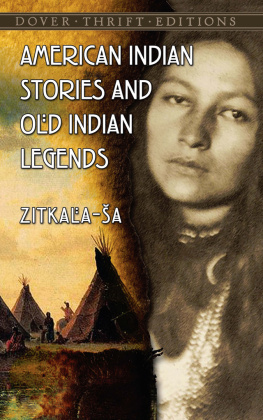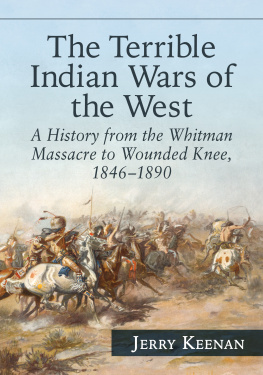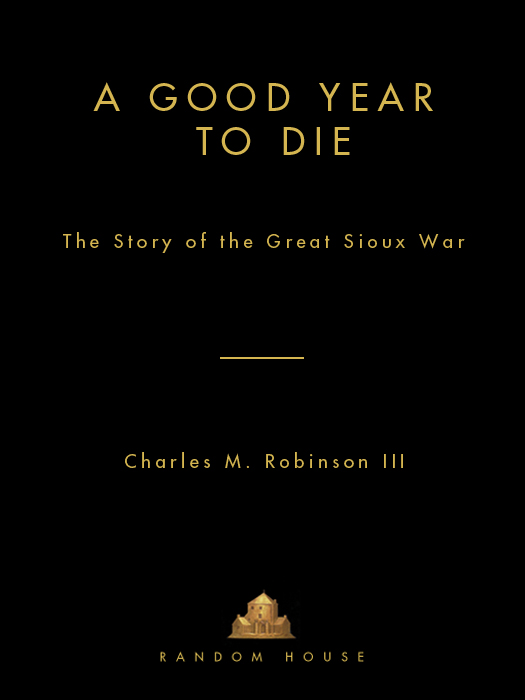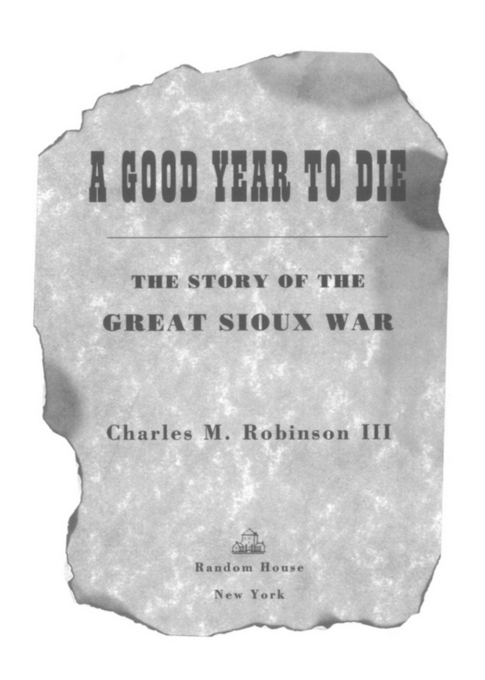Copyright 1995 by Charles M. Robinson III
All rights reserved under International and Pan-American
Copyright Conventions. Published in the United States by
Random House, Inc., New York, and simultaneously in Canada
by Random House of Canada Limited, Toronto.
Library of Congress Cataloging-in-Publication Data
Robinson, Charles M.
A good year to die : the story of the great Sioux war /
Charles M. Robinson III.
p. cm.
eISBN: 978-0-307-82337-3
1. Dakota IndiansWars, 1876. 2. Dakota IndiansGovernment relations. 3. Dakota IndiansLand tenure. 4. Black Hills (S.D. and Wyo.)History19th century. I. Title
E83.976.R63 1995
973.8 2dc20 95-7820
v3.1
It is a good day to die!
L AKOTA BATTLE CRY
The art of war among the white people is called strategy or tactics; when practiced by the Indians it is called treachery.
M AJ . G EN . N ELSON A. M ILES
EXPLANATIONS
In retrospect, the Great Sioux War is confusing because it not only pitted white against Indian but Indian against Indian as well. At the time, those in government service were classified as friendly, while those who opposed the government were hostile. For the sake of simplicity, I have continued to use the word hostile for those at war with the government, to distinguish them from those on the government side. It does not imply any criticism, for indeed the government had given them much to be hostile about.
From the very beginning, the Crows, Arikaras (also known as Rees), Shoshones, Utes, Pawnees, Nez Percs, and Bannocks were allied with the government, and remained so throughout the war. The Crows, Rees, and Shoshones in particular performed valiant service as military scouts.
The antigovernment Indians consisted of the western Sioux, or Teton Lakota Nation, and their allies, the Northern Cheyenne Nation. They were supported to a limited extent by individual groups of Santee Sioux, Yanktoni Sioux, and Arapahos. However, the antigovernment Indians were never completely unified, and to understand who was or was not fighting against the government, the war must be divided into three phases.
In the earliest periodfrom about January through April 1876most of the opposition came from free-roaming bands of Lakotas and Cheyennes outside the reservation; the reservation Indians were largely neutral. Beginning in late April 1876, however, hundreds of reservation Lakotas and Cheyennes went over to the hostile side, joined by the Yanktons, Santees, and Arapahos, although the majority of the Arapaho Nation continued to maintain neutrality. By late September 1876, the tide had turned against the hostiles; many of the Lakotas and Cheyennes still on the reservation declared for the government, as did the majority of the Arapahos. After the hostile Cheyennes were defeated in November 1876, large numbers of their warriors changed sides and served with the government forces for the remainder of the war.
Reservation and agency are two different things. A reservation is an area of land set aside by the government for the exclusive use of an Indian tribe or group of tribes. An agency is the administrative seat of a particular area, and was the location at which Indians were entered on government rolls, and government rations were issued. Smaller reservations were served by a single agency. On larger reservations with several tribes, more than one agency might be necessary. At its height, the Great Sioux Reservation had nine different agencies independent of each other.
Lodge and tipi are used interchangeably, as both denote a form of housing. Tipi describes a particular type of lodge, a conical structure covered with hides or canvas, whereas lodge might mean any type of shelter.
A peculiarity of the period was the army system of brevet rank among officers who had served in the Union Army. A brevet was a temporary rank given to Union officers during the Civil War as a reward for meritorious service. Its purpose was twofold: to honor the recipient in a quick, efficient manner, and to create an officer corps sufficiently large enough to handle the emergency. When the war ended, officers who opted to remain in the army often were required to take reductions in rank and pay. As a courtesy, however, they were addressed by their brevet ranks. Thus Custer, Mackenzie, and Miles were all called general, in deference to their Union Army service, although in reality, Custer was a lieutenant colonel, and Mackenzie and Miles were colonels.
I have referred to all officers by their permanent ranks, using the brevet only in quotes.
Until 1889, when they were partitioned to form separate states, North and South Dakota were combined into a single federal administrative area known as Dakota Territory. The territorial capital was at Yankton on the Missouri River. Since the events in this book largely occurred in 187677, I generally have referred to the region as Dakota Territory. Sometimes, however, when I found it necessary to specifically locate a particular place or event, I have used the modern state name.
CONTENTS
LIST OF MAPS
INTRODUCTION
The year 1876 was a pivotal one. The United States prepared for its centennial with an extravagant exposition in Philadelphia. During that hundred years of national existence, the industrial revolution had changed the face of the planet, and mans capabilities seemed limitless. The focal point of the exposition would be the halls of arts and industries, with exhibits of technological achievement from every major nation on earth.
The United States itself had grown from thirteen agrarian British colonies hugging the Atlantic coast to one of the worlds leading industrial and economic powers. The Atlantic and Pacific were linked by rail and telegraph. In 1876, Alexander Graham Bell invented the telephone. John D. Rockefeller was organizing the businesses that would ultimately become Standard Oil. Andrew Carnegie was making Pittsburgh synonymous with steel.
Nor did the nation lag behind in art. Winslow Homer, John Singer Sargent, and James McNeill Whistler were establishing American painters as equals to their European counterparts. The American stamp in letters was even greater. In 1876, Samuel L. Clemens published The Adventures of Tom Sawyer, a timeless story of boyhood that confirmed its author as a giant of American literature, and shook the literature itself from its British roots giving it a national character all its own.
Baseball had become a national passion since its invention almost thirty years before, and in 1876, the five-year-old National Association of Professional Base Ball Players reorganized itself as the National League.
In the South, the bitter years of Reconstruction were drawing to a close. Most states had reestablished their sovereignty, and only a few remained under military rule.
Not everything was bright, however. Four years earlier, General Ulysses S. Grant, the Civil War hero, had been overwhelmingly elected to a second term as president, only to find himself mired in scandal. First, the Credit Mobilier, involving high officials in government, nearly destroyed the Union Pacific Railroad on which the nation depended for coast-to-coast transportation. Then the Whiskey Ring, equally well connected, defrauded the government out of millions of dollars in liquor tax revenue. The administration of the Indian agencies had long been a national disgrace, and Congress was becoming suspicious of Grants sacrosanct War Department. Aggravating the situation was one of the worst economic depressions in history. Thousands went hungry and homeless, while politicians enriched themselves at public expense.







